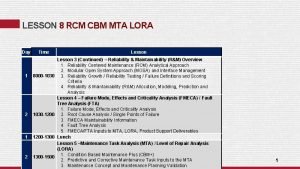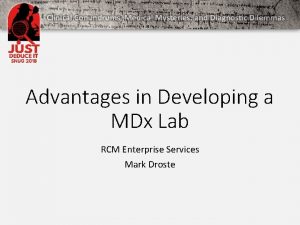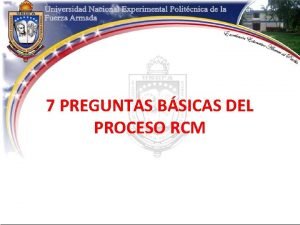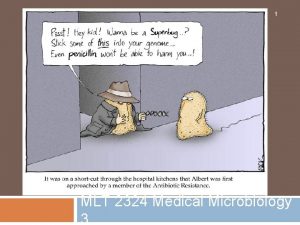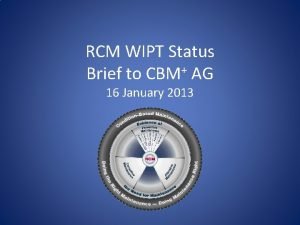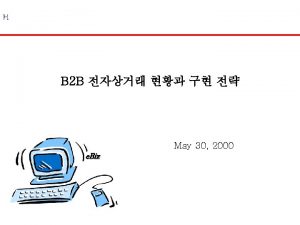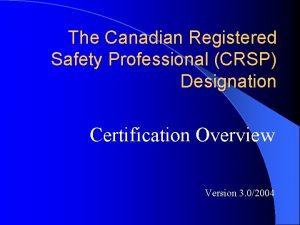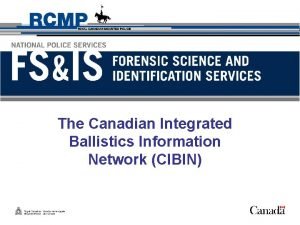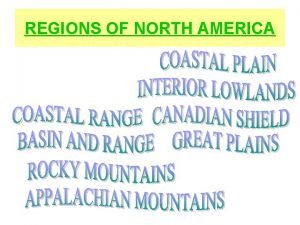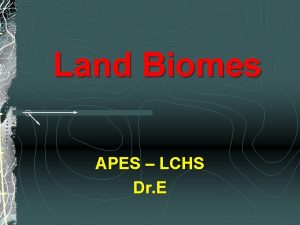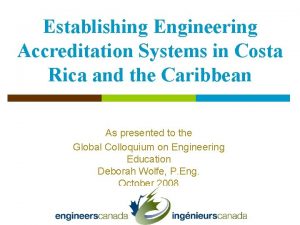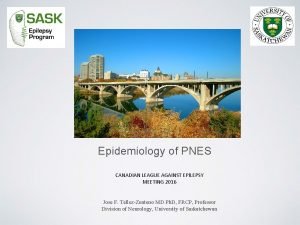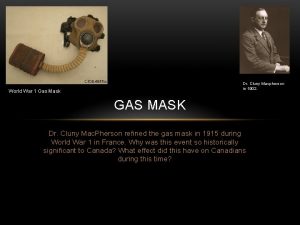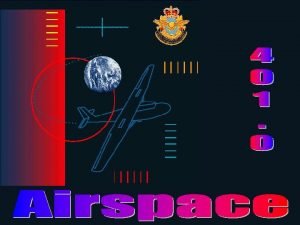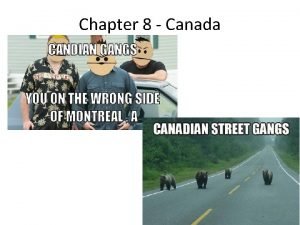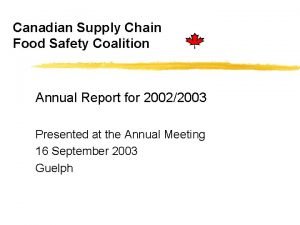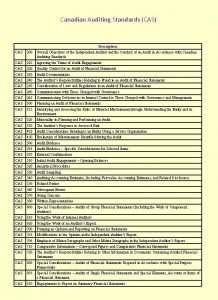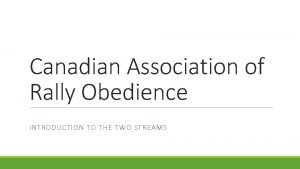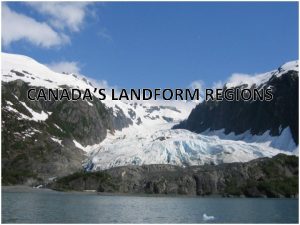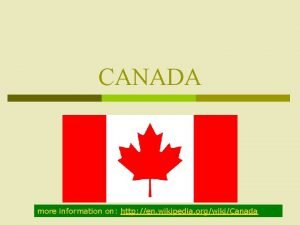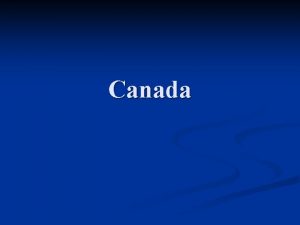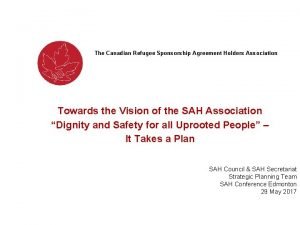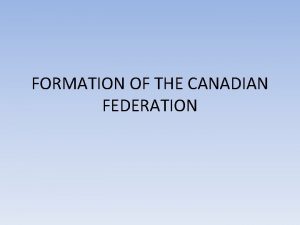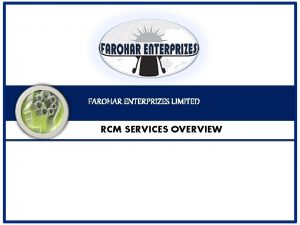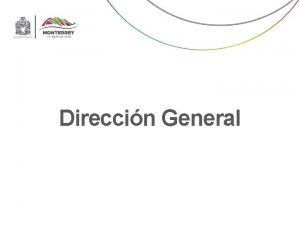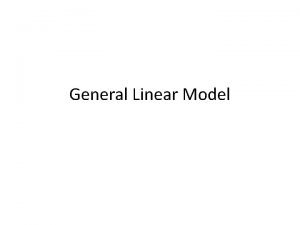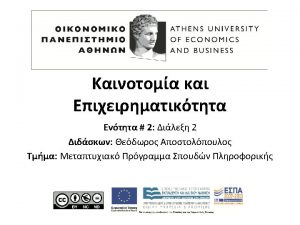The Canadian RCM general overview of the model








































- Slides: 40

The Canadian RCM : general overview of the model and specific features of the Narccap simulations Sébastien Biner and Daniel Caya with the contribution of the climate simulation team at Ouranos

The Canadian RCM (CRCM) history • Developped at the University of Québec in Montréal during the 1991 -2001 period – Started as the Ph. D. of Daniel Caya – Research assistants and students were added – Different versions were released • Developped, maintained and used by the Ouranos Consortium since 2001

CRCM v 4. 2. 0 (version used for the Narccap simulations) Dynamics semi-implicit semi-Lagrangian algorithm Physics Surface scheme CLASS 2. 7 (3 lyrs) Convection and large scale condensation Bechtold-Kain-Fritsch sursaturation removal Radiation SW Fouquart & Bonnel LW Morcrette Clouds diagnostically based on relative humidity excess & conditional stability soil: Wilson & Henderson-Sellers 1° veg: GLC 2000 1 km > 1° Arakawa-C grid on polar stereographic projection Gal-Chen scaled-height vertical coordinates Davies nesting on horizontal wind large-scale nudging (aka spectral nudging)

Key features • CLASS surface scheme • Large-scale nudging


2 nd generation surface scheme with 3 soil layers

Each cell is divided in 4 sub-regions

Sowpack treated as explicit 4 th layer

Large-scale Nudging. Modification of a prognostic variables X with the following equation : Where XRCM is the value of X from the RCM, XLBC is the value of X from the LBC and is a function of the length scale l and the altitude z. z 0 z 0 lc l 0 Only the fields higher than altitude z 0 and with scale larger than lc are affected by the large-scale nudging. Tyically, lc=1400 km, z 0=500 h. Pa and X=horizontal wind 0=0. 05 (I. e. e folding time of 48 h)

Large-scale Nudging. Motivations to use LSN • Prevents the development of large discrepencies between the LBC and the RCM Without LSN With LSN CRCM(blacklines) and NCEP(color) analysis GZ 500 h. Pa [dam] on 22 May 1988 at 12 Z (i. e. 180 h of simulation)

Large-scale Nudging. Motivations to use LSN • Prevents the development of large discrepencies between the LBC and the RCM • Reduction of the mismatch between the RCM and the LBC at the outflow boundary • Reduction of the sensitivity of a simulation to the domaine size and configuration • Side effects seem minimal up to now(c. f. Alexandru et al 2009, MWR)

Set-up for the Narccap simulations • CRCM version 4. 2. 0 • 160 x 135 computation grid • 10 points Davies nudging on the perimeter • 140 x 115 diagnostic grid (grid of the Net. CDF files) • Polar stereographic grid with 50 km resolution @ 60 deg. N • 900 s time-step

Other specific questions • Soil initialisation? • Spin-up length?

Soil initialization • Some soil variables are prognostic and only need to be initialized (e. g. soil moisture, temperature, snow cover, …) • Some soil variables are prescribed with different update frequencies (e. g. SST, Sea ice, Root depth, ozone, …) Details : • Deep soil variables obtained from a 3 year simulation of the Canadian GCMiii • Topography and Ground Cover are taken from 1/6 x 1/6 deg US Navy datset • Vegetation fields : GLC 2000 dataset interpolated on 1 x 1 deg grid • SST and Sea ice : • Using reanalysis LBC : lake and ocean use the AMIP 2 values • Using a given GCM for LBC : ocean uses the GCM values and Lake uses a lake model with flux correction. • Other variables : initialized by a climatology of the Canadian GCMiii

Spin-up period • We use 3 years of spin-up • Order of time taken for the deepest soil layer to reach steady state. Soil moisture Soil temperature Layer 1 Layer 2 Layer 3 1999 2000 2001 2002 2003 2005 Time evolution of soil moisture (left) and temperature (right) for the three soil layer over a region covering apporximatively the contiguous USA (courtesy of Dominique Paquin)

Thank you

CRCM 4 (v 4. 2. 3) CRCM 5 (v 3. 3. 0) 201 x 193, 29 L, @45 km 178 x 158, 53 L, @0. 5° CRCM 5 C (v 3. 3. 0) 178 x 158, 53 L, @0. 5° CRCM 5 V (v 3. 3. 0) 180 x 158, 35 L, @0. 5° Surface scheme CLASS 2. 7 (3 lyrs) soil: ISBA (2 lyrs) soil: USDA CLASS 3. 4 (3 lyrs, no CLASS 2. 7 (3 lyrs) soil: Webb (1993) Veg : Wilson & Henderson -Sellers Convection and large scale condensation Bechtold-Kain-Fritsch sursaturation removal Kain-Fritsch Sundqvist Zhang-Mc. Farlane sursaturation removal Radiation SW Fouquart & Bonnel LW Morcrette RRTM correlated-K Clouds diagnostically based on relative humidity excess & conditional stability based on relative humidity with vertically varying threshold statistical cloud scheme Spectral nudging yes no no no Wilson & Henderson. Sellers 1° veg: GLC 2000 1 km > 1° 1 km AGRC 10 km FAO 1° veg: USGS 1 km mosaïc) organic soil snow (Brown) soil: Wilson & Henderson-Sellers 1° veg: USGS 1 km

CRCM_4. 2. 3 • semi-implicit semi-Lagrangian algorithm • Arakawa-C grid on polar stereographic projection • Gal-Chen scaled-height vertical coordinates. • nesting follows Davies over the sponge zone (9 -grid points) • large-scale nudging (Biner et al. 2000) is applied over the entire domain for horizontal wind over 500 h. Pa • physical parameterization follows AGCM 3, including CLASS_V 2. 7 surface scheme (3 layers), but moist convection follows Bechtold-Kain-Fritsch • 201 x 193 grid points (182 x 174) • 45 km true at 60 N. • 29 vertical levels • Dt 900 sec. • Pilot ERA 40 at 2. 5 deg and AMIPII 1 deg

Histoire : 1991 - 2001

Regional Climate Modelling circa 1991 NCAR Reg. CM: F. Giorgi CRCM- : D. Caya, Ph. D • Road-tested MM 4 • Novel NH-SI-SL Dyn. Dt = 5 min, Dx = 60 km Dt = 20 min, Dx = 45 km • Adapted m-scale Physics • Integral GCMii Physics • Ensemble of 5 -day sim. • 2 -month continual sim.

1994 A single January mean precipitation (mm da-1) T 32 GCMii 45 -km CRCM-

CRCM- (Caya and Laprise, 1999 MWR) Outcome: • • No penalty for NH with use of SI-SL SL acceptable for climate simulations GCMii Physics (almost) acceptable at 45 km No climate drift in long simulation with nested RCM • Plausible fine-scale details in RCM simulation

en 1996 CRCM-I (1/3) First “Policy” Run • 101 x 71 @ 45 km • 19 levels to 29 km • 2 X 5 years • 1 x and 2 x CO 2 • Atm: GCMii driven • Ocean: Results from GCMii mixed layer and thermodynamic sea-ice • No Lakes

GCMii @ T 32 5 -year mean 1 x. CO 2 Winter precipitation (mm da-1) CRCM-I @ 45 km

CRCM-I (3/3) (Laprise et al. , 1998, Atmos. -Ocean) Take home message: • Stable integration over 5 years of 1 x and 2 x CO 2 • Increased spatial definition of climate features and climate-change signal • NO increased of temporal variability (variance) • Different distributions for some variables (pcp) • Systematic biases of GCM are passed on to RCM • Need to improve GCMii physics at CRCM resol. – Moist convection (in summer) – Cloud cover diagnostics

en 1999 CRCM-II (1/3) Second “Policy” Run • 120 by 120 @ 45 km • 3 time-slices of 10 yrs • Transient CO 2 and aerosols scenario • Atm: CGCM 2 driven • Ocean: Results from CGCM 2 dynamical ocean and sea-ice • No Lakes

CGCM 2 @ T 32 10 -year mean (1 x. CO 2) Winter precipitation (mm da-1) CRCM-II @ 45 km

CRCM-II (3/3) (Laprise et al. , Clim. Dyn. , 2003) Improvements upon CRCM-I – – Moist convection of Kain and Fritsch (1990) Modified diagnostic clouds Implicit Tg prognostic equation SSTs and sea ice interpolated from CGCM 2 -simulated dynamical ocean and sea ice – Transient CO 2 and aerosols as in CGCM 2 Physics still requires attention – Bechtold’s version of Kain-Fritsch better – Clouds and Stratiform precipitation – Surface processes

Le consortium Ouranos est créé en 2001 550 Sherbrooke ouest, Montréal, au centre-ville, 18 e-19 e étage, 1600 m 2 Partenaires fondateurs: • 8 ministères provinciaux • Hydro-Québec • Service Météorologique du Canada • Autres partenaires probables + 4 Universités Financement: • Environ 9 M/an en support financier, technique et scientifique, sans inclure les fonds de recherche universitaires Vision: • Un lieu d'échange et de formation pour des climatologues, hydrologues, géographes, économistes, sociologues… • Une masse critique de spécialistes des changements climatiques. . . • Un nœud multi-universitaire, multipartenaire, multi-disciplinaire…

feux fortes marées et tempêtes 1994 1999 sécheresses, canicules Saguenay (1996), 26 millions de m 3 d'eau et 9 millions de tonnes de débris Le Grand Verglas (1998), 1, 5 millions d'abonnés affectés, jusqu'à 30 jours sans électricité

Les principaux projets à Ouranos

Simulations climatiques à Ouranos • MRCC-2 piloté par réanalyses – NCEP RA 1 @ ~500 km (1975 -1999) • MRCC-2 piloté par GCM couplé – Modèle canadien CGCM 2 @ ~500 km (is 92 a 1968 -1995) – Modèle canadien CGCM 2 @ ~500 km (is 92 a 2039 -2064) • Validation – Observation de surface sur grille (Observations: Tabri, pcp) – Intégrations spatiale sur bassins versants (avec Hydro-Québec) Ruissellement (avec Hydro-Québec) – … • Évaluation de l’incertitude

CRCM-III “Pan-Canadian” • 193 x 145 @ 45 km 9, 000 km x 6, 500 km • Driven by CGCM 2 • Driven by NCEP • Mixed-layer lakes

Les domaines MRCC

3 x 25 ans 4 x 10 ans 2 x 5 ans

Domaine NARCCAP




 Tea market in canada
Tea market in canada Rcm statement writing
Rcm statement writing Smr code chart
Smr code chart Lab rcm
Lab rcm Rcm tcth
Rcm tcth 7 preguntas del rcm
7 preguntas del rcm Rcm microbiology
Rcm microbiology Rcm
Rcm Rcm status
Rcm status General overview
General overview Canadian model of occupational performance and engagement
Canadian model of occupational performance and engagement Planos en cinematografia
Planos en cinematografia Where did general lee surrender to general grant?
Where did general lee surrender to general grant? Zones de vegetation du canada
Zones de vegetation du canada Crsp designation
Crsp designation Forensic ballistics canada
Forensic ballistics canada Dimension of globalization
Dimension of globalization Atlantic coastal plains facts
Atlantic coastal plains facts Marketing an introduction 6th canadian edition
Marketing an introduction 6th canadian edition Deciduous forest abiotic factors
Deciduous forest abiotic factors Canadian engineering accreditation board
Canadian engineering accreditation board Canadian league against epilepsy
Canadian league against epilepsy The canadian encyclopedia
The canadian encyclopedia Canadian domestic airspace
Canadian domestic airspace Largest of the three prairie provinces
Largest of the three prairie provinces Canadian supply chain food safety coalition
Canadian supply chain food safety coalition Canadian centre for victims of torture
Canadian centre for victims of torture Canadian perioperative guidelines
Canadian perioperative guidelines Canadian bioinformatics workshop
Canadian bioinformatics workshop Canadian auditing standards
Canadian auditing standards Canadian association of rally obedience
Canadian association of rally obedience Innuitian mountains population
Innuitian mountains population Canadian peak wikipedia
Canadian peak wikipedia Landforms and natural resources
Landforms and natural resources A cotton dirty old tie
A cotton dirty old tie Canadian address format
Canadian address format Accounting principles second canadian edition
Accounting principles second canadian edition Accounting principles second canadian edition
Accounting principles second canadian edition Accounting principles second canadian edition
Accounting principles second canadian edition Cgvd
Cgvd Sponsorship agreement holders
Sponsorship agreement holders


